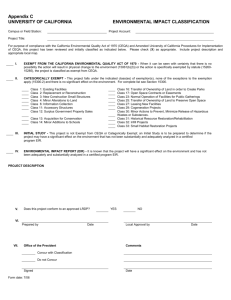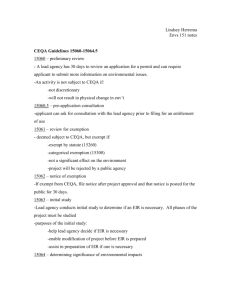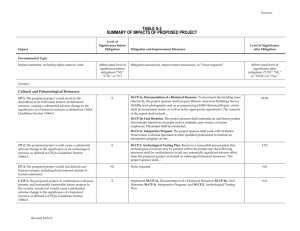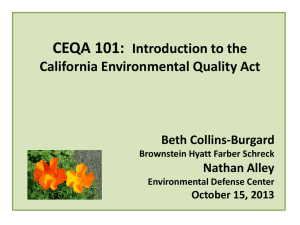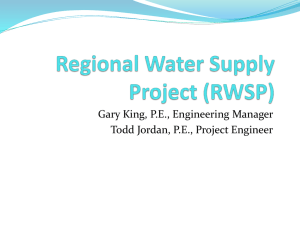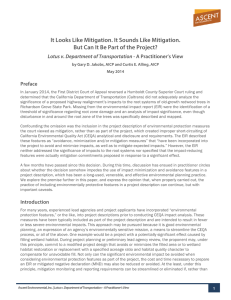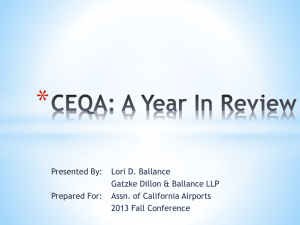Read Janet Brennan`s Guide to Making EIR Comments
advertisement
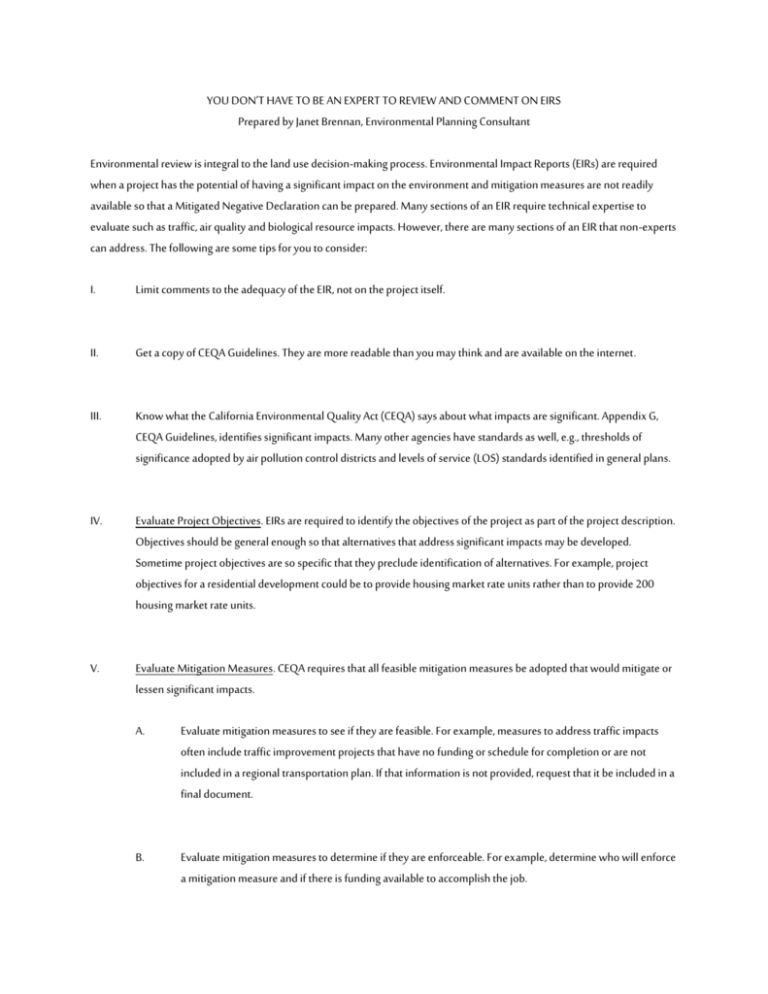
YOU DON’T HAVE TO BE AN EXPERT TO REVIEW AND COMMENT ON EIRS Prepared by Janet Brennan, Environmental Planning Consultant Environmental review is integral to the land use decision-making process. Environmental Impact Reports (EIRs) are required when a project has the potential of having a significant impact on the environment and mitigation measures are not readily available so that a Mitigated Negative Declaration can be prepared. Many sections of an EIR require technical expertise to evaluate such as traffic, air quality and biological resource impacts. However, there are many sections of an EIR that non-experts can address. The following are some tips for you to consider: I. Limit comments to the adequacy of the EIR, not on the project itself. II. Get a copy of CEQA Guidelines. They are more readable than you may think and are available on the internet. III. Know what the California Environmental Quality Act (CEQA) says about what impacts are significant. Appendix G, CEQA Guidelines, identifies significant impacts. Many other agencies have standards as well, e.g., thresholds of significance adopted by air pollution control districts and levels of service (LOS) standards identified in general plans. IV. Evaluate Project Objectives. EIRs are required to identify the objectives of the project as part of the project description. Objectives should be general enough so that alternatives that address significant impacts may be developed. Sometime project objectives are so specific that they preclude identification of alternatives. For example, project objectives for a residential development could be to provide housing market rate units rather than to provide 200 housing market rate units. V. Evaluate Mitigation Measures. CEQA requires that all feasible mitigation measures be adopted that would mitigate or lessen significant impacts. A. Evaluate mitigation measures to see if they are feasible. For example, measures to address traffic impacts often include traffic improvement projects that have no funding or schedule for completion or are not included in a regional transportation plan. If that information is not provided, request that it be included in a final document. B. Evaluate mitigation measures to determine if they are enforceable. For example, determine who will enforce a mitigation measure and if there is funding available to accomplish the job. C. Evaluate whether or not the mitigation measure will mitigate long-term impacts and if all feasible mitigation measures have been identified. VI. Evaluate Alternatives. CEQA requires that project alternatives be identified that would mitigate significant impacts. The discussion is required to be focused on alternatives to the project or its location which are capable of avoiding or substantially lessening any significant effects of the project, even if these alternatives would impede to some degree the attainment of the project objectives, or would be more costly. CEQA also requires identification of an Aenvironmentally superior@ alternative. Make sure all these requirements are addressed. If the environmentally superior alternative is rejected, evaluate the reasons given in the EIR. VII. Determine if the Cumulative Project List is Complete. CEQA generally requires a list of past, present, and probable future projects producing related or cumulative impacts. Make sure these projects are used in evaluating cumulative impacts, and keep the list to compare to future EIRs in the project area. VIII. Determine if Project Impacts are Evaluated in Relationship to the Baseline. The baseline is generally determined to be the conditions existing at the time the Notice of Preparation (NOP) is filed. Sometimes, baselines may include future projects, particularly as they relate to traffic analyses. Sometimes general plans are evaluated against existing plans, not environmental conditions present at the time the NOP is filed. IX. Avoid the Boiler Plate and Focus on Impacts, Mitigation Measures, and Alternatives. X. Make Sure Your Comments are Responded to in the FEIR. You will have at least 10 days to comment on responses prior to a public hearing. XI. Frequently, public hearings to certify an EIR and to consider a project are held together. This is the time to comment on the project itself.

